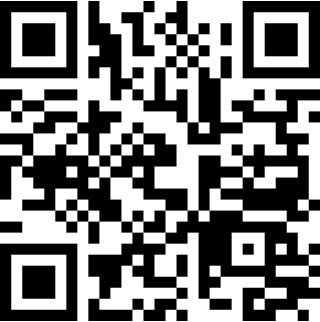| Strain Name |
C.B6-Cd3etm2(CD3E)Bcgen Cd3dtm2(CD3D)Bcgen Cd3gtm2(CD3G)Bcgen Tnfrsf9tm1(TNFRSF9)Bcgen/Bcgen
|
Common Name | B-hCD3EDG/h4-1BB mice(C.B6) |
| Background | BALB/cCrSIcNifdc, C57BL/6 | Catalog number | 113254 |
|
Aliases |
CD3epsilon, IMD18, T3E, TCRE; CD3-DELTAELTA, IMD19, T3D, CD3D; CD3-GAMMAAMMA, IMD17, T3G, CD3G; 4-1BB, CD137, CDw137, ILA, IMD109
|
||
|
NCBI Gene ID |
916, 915, 917, 3604 | ||
- The CD3 complex is an important marker on the surface of T cells. CD3 has four peptide chains, namely, the γ chain, the δ chain, the ε chain, and the ζ chain. The transmembrane region of CD3 molecules is connected to the transmembrane region of TCRα and β chains through salt Bridges to form the TCR-CD3 complex, which jointly participates in the recognition of antigens by T cells. In this process, TCR recognizes and binds to antigenic peptides presented by MHC molecules, resulting in the phosphorylation of the immune receptor tyrosine activation motifs ITAM in the CD3 cytoplasmic region, which can then recruit other tyrosine protein kinases (such as ZAP-70), thereby causing activation of downstream pathways such as MAPK, NF-κB and other signaling pathways. Under the action of multiple transcription factors, it can cause T cell proliferation, migration, cytokine production and effector function. Phosphorylation of ITAM and binding to ZAP-70 are important reactions in the signaling process of T cell activation. In addition, studies have shown that CD3ε or γ chain gene defects can cause T cell signaling defects. CD3 is a hot target, and many antibody drugs targeting CD3 have been developed for the treatment of hematoma and solid tumor.
- 4-1BB is a member of the TNF receptor superfamily. 4-1BB contributes to the proliferation, survival and development of T cells. It can also induce peripheral monocyte proliferation, enhance TCR/CD3 trigger activation-induced T cell apoptosis, and regulate CD28 co-stimulation to promote Th1 cell response.
Gene targeting strategy for B-hCD3EDG/h4-1BB mice(C.B6).
Chimeric human CD3EDG were expressed, while mouse Cd3edg were knocked out in B-hCD3EDG/h4-1BB mice(C.B6). The exons 2-7 of the mouse 4-1BB gene, which encode the extracellular domain, were replaced by human counterparts in B-hCD3EDG/h4-1BB mice(C.B6). The genomic region of mouse 4-1BB gene that encodes transmembrane domain and cytoplasmic portion were retained. The promoter, 5’UTR and 3’UTR region of the mouse gene were also retained. The chimeric 4-1BB expression was driven by endogenous mouse 4-1BB promoter, while mouse 4-1BB gene transcription and translation will be disrupted.
mRNA expression analysis






Strain specific 4-1BB expression analysis in wild-type BALB/cCrSlcNifdc mice and homozygous humanized B-hCD3EDG/h4-1BB mice(C.B6) by flow cytometry. Spleen T cells were collected from wild-type BALB/cCrSlcNifdc mice (+/+) and homozygous B-hCD3EDG/h4-1BB mice(C.B6) (H/H), stimulated with anti-CD3ε in vivo (15 μg/mice for 24 hours, i.p.; BioXcell, BE0001-2, BioXcell, BE0001-1). Protein expression was analyzed with anti-mouse 4-1BB antibody (Biolegend, 106110) and anti-human 4-1BB antibody (Biolegend, 309804) by flow cytometry. Mouse 4-1BB was only detectable in wild-type BALB/cCrSlcNifdc mice. Human 4-1BB was exclusively detectable in homozygous B-hCD3EDG/h4-1BB mice(C.B6), but not in wild-type BALB/cCrSlcNifdc mice.

Strain specific 4-1BB expression analysis in wild-type BALB/cCrSlcNifdc mice and homozygous humanized B-hCD3EDG/h4-1BB mice(C.B6) by flow cytometry. Spleen CD4+ T cells were collected from wild-type BALB/cCrSlcNifdc mice (+/+) and homozygous B-hCD3EDG/h4-1BB mice(C.B6) (H/H), stimulated with anti-CD3ε in vivo (15 μg/mice for 24 hours, i.p.; BioXcell, BE0001-2, BioXcell, BE0001-1). Protein expression was analyzed with anti-mouse 4-1BB antibody (Biolegend, 106110) and anti-human 4-1BB antibody (Biolegend, 309804) by flow cytometry. Mouse 4-1BB was only detectable in wild-type BALB/cCrSlcNifdc mice. Human 4-1BB was exclusively detectable in homozygous B-hCD3EDG/h4-1BB mice(C.B6), but not in wild-type BALB/cCrSlcNifdc mice.

Strain specific 4-1BB expression analysis in wild-type BALB/cCrSlcNifdc mice and homozygous humanized B-hCD3EDG/h4-1BB mice(C.B6) by flow cytometry. Spleen CD8+ T cells were collected from wild-type BALB/cCrSlcNifdc mice (+/+) and homozygous B-hCD3EDG/h4-1BB mice(C.B6) (H/H), stimulated with anti-CD3ε in vivo (15 μg/mice for 24 hours, i.p.; BioXcell, BE0001-2, BioXcell, BE0001-1). Protein expression was analyzed with anti-mouse 4-1BB antibody (Biolegend, 106110) and anti-human 4-1BB antibody (Biolegend, 309804) by flow cytometry. Mouse 4-1BB was only detectable in wild-type BALB/cCrSlcNifdc mice. Human 4-1BB was exclusively detectable in homozygous B-hCD3EDG/h4-1BB mice(C.B6), but not in wild-type BALB/cCrSlcNifdc mice.

Strain specific 4-1BB expression analysis in wild-type BALB/cCrSlcNifdc mice and homozygous humanized B-hCD3EDG/h4-1BB mice(C.B6) by flow cytometry. Spleen Tregs were collected from wild-type BALB/cCrSlcNifdc mice (+/+) and homozygous B-hCD3EDG/h4-1BB mice(C.B6) (H/H), stimulated with anti-CD3ε in vivo (15 μg/mice for 24 hours, i.p.; BioXcell, BE0001-2, BioXcell, BE0001-1). Protein expression was analyzed with anti-mouse 4-1BB antibody (Biolegend, 106110) and anti-human 4-1BB antibody (Biolegend, 309804) by flow cytometry. Mouse 4-1BB was only detectable in wild-type BALB/cCrSlcNifdc mice. Human 4-1BB was exclusively detectable in homozygous B-hCD3EDG/h4-1BB mice(C.B6), but not in wild-type BALB/cCrSlcNifdc mice.












